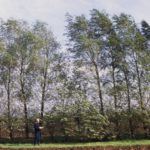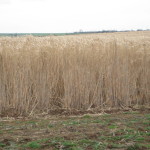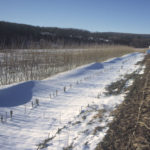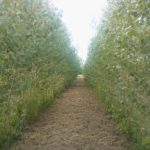Windbreaks, sight screens, barriers – willows, poplars & miscanthus are the green solution
Do you want to hide something ugly? Do you want a shelter belt for your house to reduce wind chill? Do you need an effective windbreak for a horticulture crop? Do you want to reduce local noise and air pollution? You can do all this and more using fast growing shrubby trees like willows and poplars and herbaceous crops such as miscanthus.
Whatever your issue these energy crops can be deployed. Here’s a list of applications that we’re aware of:
-
Tall perimeter windbreaks – these can reduce wind speed for 600m downwind and are great for orchards or campsites.
- Internal windbreaks – typically planted within fruit plantations (both soft fruit and orchards) where protection is required during spring when blossom emerges and autumn when there is danger of wind blowing fruit off trees.
- Shelter belts around your house – are you exposed to the wind? That’s going to increase your fuel bill. Willows, poplars and miscanthus can help reduce your exposure, keep you warm and save money. Twiggy growth reduces wind even in the winter. Willows have been planted for this purpose on the Orkneys and Falkland Islands – say no more!
- Sight screens – you can mix and match willow, poplar and miscanthus to provide an all year round screen to hide the blot in the landscape ruining your view.
- Snow fences – A 1.2 m (4 ft) high fence can trap 12 tonnes of snow per metre of its length and prevent snow drifts, keeping roads open. They are Much cheaper, more resilient and environmentally friendly than slatted wood or plastic solutions.
- Flood defence – is your house at the bottom of a hill and at risk of flash floods when a storm hits? Carefully planted energy crops can provide an effective barrier and reduce the flow of run off.
- Noise reduction – willows and poplars not only reduce the wind they reduce noise from cars and airport runways. We’re involved in research work with Heathrow Airport at the moment.
- Odour management – Got a smelly neighbour? E.g. a poultry farm, a landfill site, a pig farm or a farmer that spreads slurry? The “wind” breaking qualities of these energy crops have exactly the same benefits – the leaves absorb ammonia and help disperse and dilute odours.
- Golf ball barriers – we’ve sold willows and poplars to golf courses that want to prevent balls going into neighbouring properties but need a more aesthetic solution than netting.
If you have any of these issues and want some to source the planting material and get advice on how to plant we can help!




